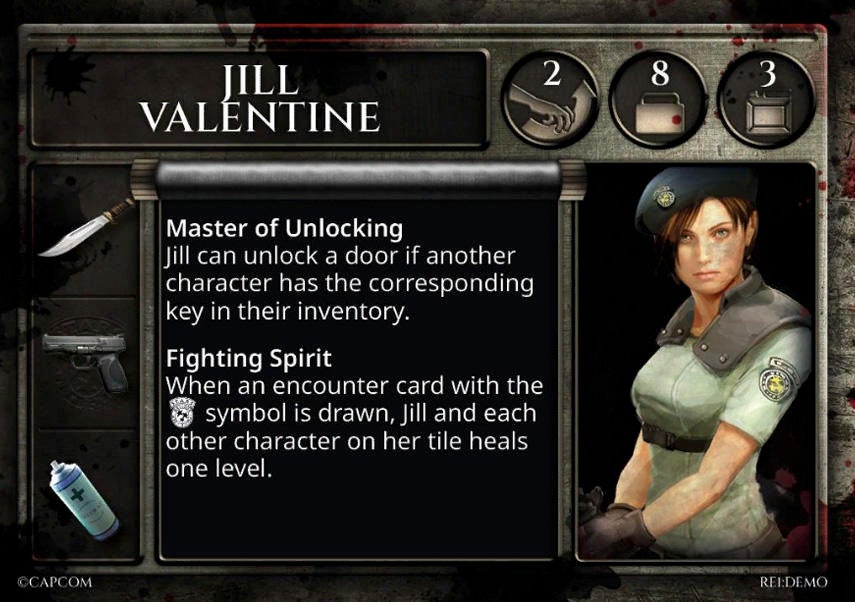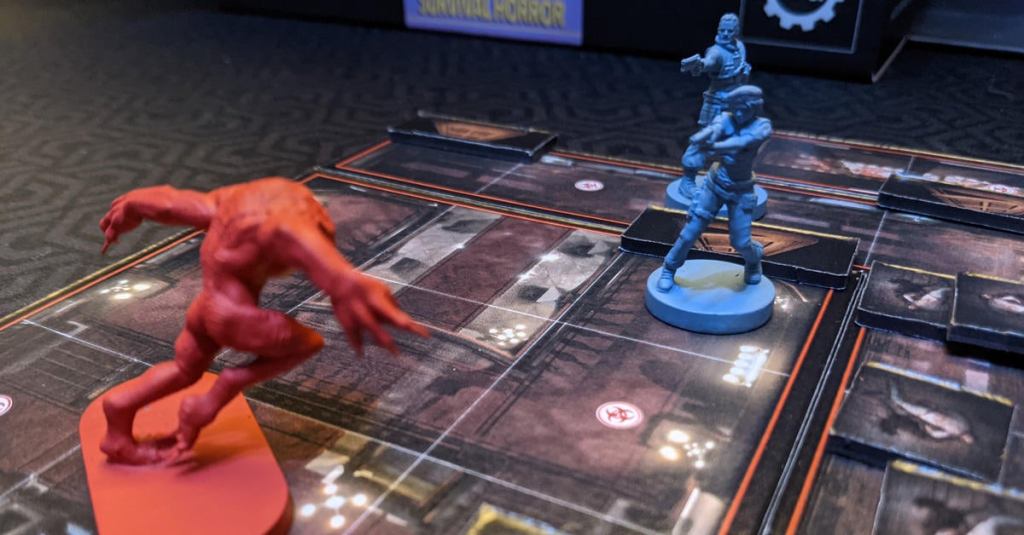Steamforged Games and Capcom’s Resident Evil: The Board Game has made a big impression with fans, as the Kickstarter has already surpassed 1 million and continues to unlock new stretch goals. The question then becomes should you give it a shot, and the answer for any fan of the franchise is an emphatic yes. The elements you adore from Resident Evil are all accounted for, from the tension and unease that comes from opening those creaky doors to the art form of making every shot count as you try and hold onto your precious ammo, and those elements flourish in an easy to learn system that is welcoming to players of all experience levels. In short, it rules, but if you need more convincing, let’s go through it in more detail.
Videos by ComicBook.com
Resident Evil: The Board Game has a straightforward and easy to grasp core gameplay loop, and is broken up into three phases, which are called the Action Phase, Reaction Phase, and Tension Phase. The Action Phase is where you take four character actions with your chosen character, which for my game was Barry Burton and Jil Valentine. Actions can be attacking with a weapon, evading, opening a door, or picking up an item, and once all are taken the Reaction Phase starts, which allows enemies to move or attack.

The key thing here is your tile can be more than just the individual tile your character is on, which is where some strategy comes in. You’ll find yourself backtracking through the Mansion just like in the original game, but here you can leave doors open or shut. If you leave them open, it means you don’t have to waste an action opening them again if you double back, but you also run the risk of drawing more enemies your way. Your tile is defined by any amount of tiles with open doors in between, so if you left two doors on previous tiles open, “your tile” now includes those two tiles plus the one you are on. Fire a gunshot and enemies on all three tiles can react and move closer towards you, and they’ll use an Out of Sequence action to do so, so it’s not even their typical reaction phase, giving them more chances to attack.
You can use the doors and environment to your advantage though as well. Let’s say you’ve got an enemy that you don’t want to waste ammunition on. You could draw it into a room, leave, and close the doors theoretically, and while it will take some skill, the Zombie then can’t leave unless a card or ability specifically allows them to. Of course, if you need something in that room later, well, you’ve now made it worse for yourself, so there’s some risk versus reward to this method.

The final Phase is the Tension Phase, which has you drawing a Tension Card. These are broken up into three styles, Green, Amber, and Red. Green cards just feature some spooky text but are All Clear. Amber cards will throw a wrench into your plans or force you to make a difficult choice. Meanwhile, Red cards are the most dangerous, and are targeted as jump scares and feel like those classic moments from the games where something reaches through a window or crashes through a door to cause chaos. In my case, Barry and Jill were moving along pretty swimmingly until a card spawned some Zombies and Corpses just a few spaces away from our position, and the room I needed to get to was in the same hallway, as was a mission I needed to complete. To say this was hectic would be an understatement, and I used more ammo than I wanted to right before having to take on a Hunter, so not exactly a recipe for success.
Resident Evil will also change things up along the way, as some spaces feature an Encounter Card icon, and when you draw these you can find clues to puzzles or be made to spawn Corpses or Zombies on your tile. When you kill a Zombie, they become a Corpse token on the ground, and if you move back through that square, you’ll need to roll a special die to see if they spring back up. One corpse is annoying, but several can be deadly. The game goes one step further than even the video games though and lets you burn those corpses to get them off the board. You’ll need to have kerosene and something to burn it, but the fact that this is an actual gameplay element adds further strategy to an already tactical experience.

For those who master the basics, Missions will expand gameplay further, requiring you to fulfill a certain task and net you a critical reward. The demo actually has you attempting to save Brad Vickers, and if you don’t you’ll lose him, but if you do you’ll gain him as a reserve character and a sweet bonus to boot. You can save other characters in the game and open up rewards like this, and once you throw in character-specific abilities, push mechanics, and weapon abilities (like three-shot burst capability), you will have an abundance of options and gameplay to sink your teeth into.
Resident Evil The Board Game brings the original game’s survival elements to life with fast-paced but tactical gameplay while also delivering the moment-to-moment tension and panic you expect from the franchise, and no Resident Evil fan should miss out on all the terrifying fun. If the current game is this good, I cannot wait to play the full version with all the Kickstarter bells and whistles.
You can find Resident Evil: The Board Game on Kickstarter here.
Demo copy provided by Steamforged Games








